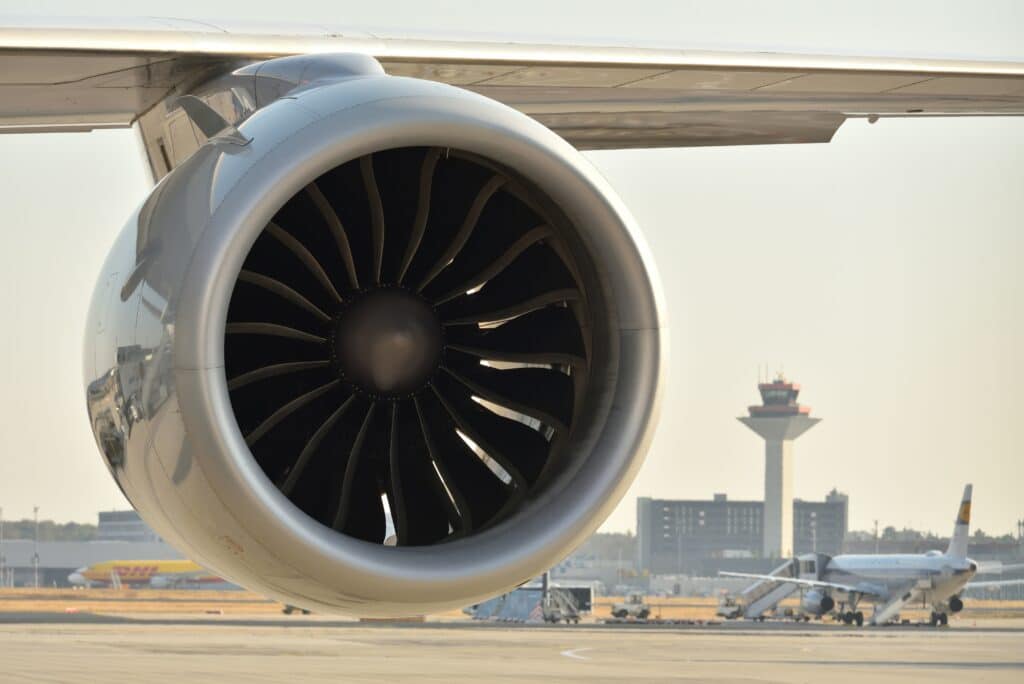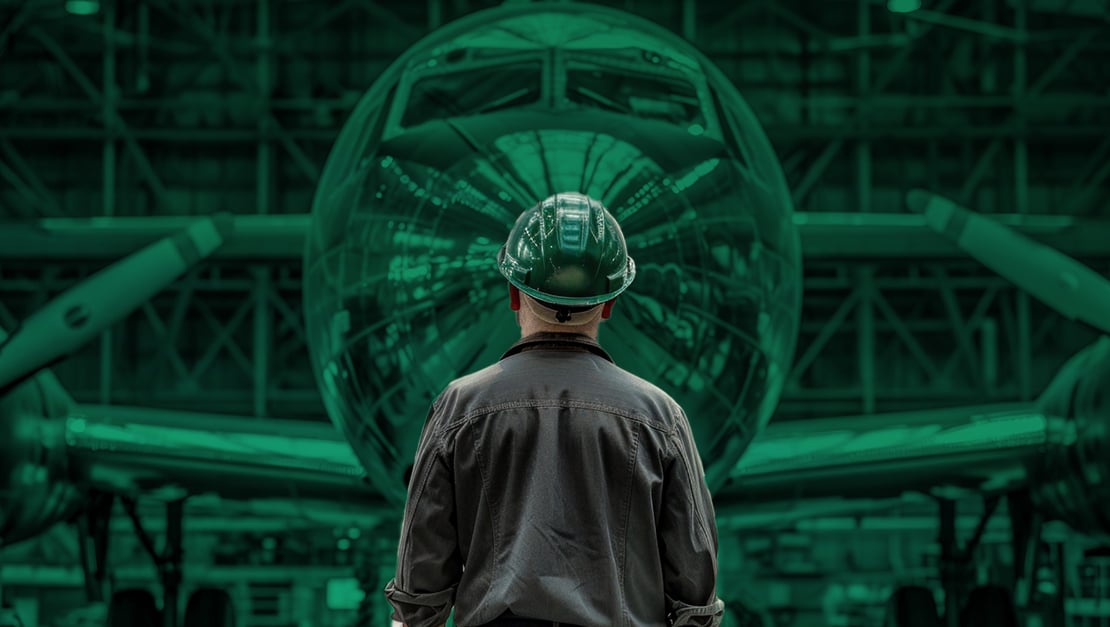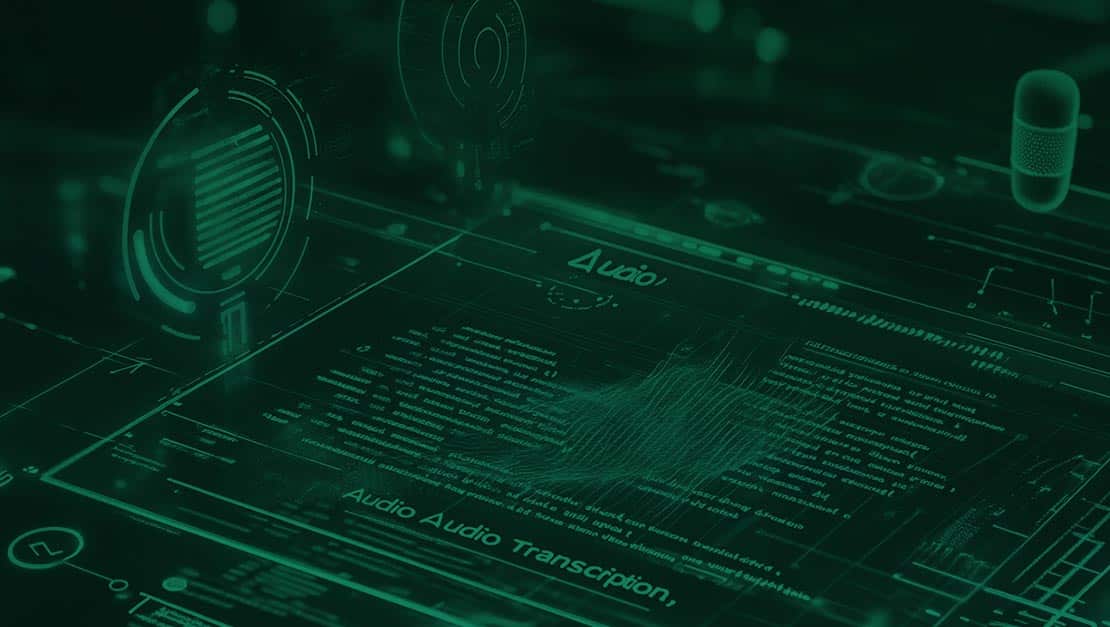While the idea of self-flying planes is one that’s still far off and might scare a few people, we’ve already entered a reality where artificial intelligence (AI) is making flying safer and more reliable. AI isn’t ready to control the cockpit quite yet, but it is being used behind the scenes in aviation maintenance.
Technicians, fleet managers, manufacturing plants, and others are turning to AI technologies to make aircraft maintenance more efficient and the parts safer to use. AI in aircraft maintenance is actually changing the way the industry is working.
In this blog post, we’ll take a closer look at how AI in maintenance is being implemented today, its benefits, different technologies, and how speech AI like aiOla is making maintenance operations simpler and easier.
Importance of Aircraft Maintenance

Aircraft maintenance is an essential aspect of aviation safety. It involves inspections, repairs, overhauls, and aircraft modification to ensure safe and efficient operation at all times. This can involve routine checks, preventative maintenance, and unscheduled repairs.
The key objectives of aircraft maintenance include:
- Safety: Ensuring aircraft are safe to operate
- Reliability: Maintaining consistent performance
- Efficiency: Minimizing downtime and operational costs
- Compliance: Adhering to aviation regulations
Still, aircraft maintenance can be challenging as repairs aren’t always planned, leading to unexpected downtime, high costs, and inefficiencies. This can lead to aircraft being pulled out of a fleet which causes delays, affecting customer trust and expenses.
In 2023, a third of all delayed flights in the US were caused by the airline itself. While this could be related to crew issues, maintenance is also a common cause of flight delays. With AI, solutions can be implemented to enhance maintenance practices so situations like this are avoided as much as possible.
How AI Technologies Are Changing Aircraft Maintenance
AI technologies like machine learning (ML), robotics, automation, and Internet of Things (IoT) integrations all impact aircraft maintenance. These technologies are helping maintenance teams analyze huge quantities of data to predict potential equipment failures and optimize maintenance needs by leveraging historical data, trends, and real-time data. Additionally, robotics and automated AI-driven systems are able to work more precisely and efficiently than employees alone, making repairs and inspections more accurate and reliable.
For example, Rolls Royce invented a new Intelligent Borescope tool that can reduce aircraft engine inspection time by 75% and save up to £100m in inspection costs over the course of five years. The tool is equipped with AI apps that scan and collect data and images of the engine. This data is captured quickly and can be used to identify irregularities for more accurate maintenance needs.
Benefits of AI in Aircraft Maintenance

Different types of AI can be used at varying touchpoints across maintenance operations, improving each one along the way by making them more efficient and reliable. AI brings with it several benefits that stand to positively change the way we complete aircraft maintenance processes. Here are a few of those key benefits.
Improved Safety
AI has the ability to improve safety with early fault detection and predictive analytics processes. Using AI technologies, airlines can identify potential issues in an aircraft before they escalate, preventing accidents or breakdowns. This reduces the risk of in-flight failures, making flying safer for both crew and passengers.
Increased Operational Efficiency and Reduced Downtime
AI-powered maintenance can optimize efficiency by helping teams predict when maintenance is necessary and then scheduling it at the best times. This helps airlines minimize unplanned downtime, keeping aircraft in use longer and improving fleet availability.
Cost Savings and Schedule Optimization
Airlines can save on costs by implementing AI technologies to optimize maintenance schedules. With predictive analytics models, AI empowers teams to plan and allocate resources better, reducing unnecessary maintenance processes, which can lead to savings in both labor and the replacement of parts.
Compliance with Regulatory Requirements
Airlines need to adhere to strict aviation standards and safety regulations, and AI can help teams remain compliant. AI can automate systems to make sure maintenance tasks are done on time and with a high degree of accuracy, while consistently generating automated records that are up to regulatory standards.
Applications of AI In Aviation Maintenance
AI is currently being used in a few different ways in the maintenance field and promises to be a staple technology in the future of aviation. To get a better understanding of various technologies’ capabilities when it comes to maintenance, let’s take a look at a few examples of how AI in aviation maintenance is applied.
Aircraft Predictive Maintenance
AI is paving the way for stronger predictive maintenance and forecasting, allowing teams to stay ahead of component failures before they happen. AI-powered sensors are put in factories and in aircraft to gather data. These sensors collect information and alert teams to problems so they can be addressed proactively, reducing unplanned maintenance and improving reliability.
Robotics and Automation
When working together, robotics can be enhanced by AI, which enables the technology to automate certain workflows. For example, drones and other robotic devices can perform visual and internal inspections to identify issues in an aircraft without extensive disassembly. This helps improve the accuracy of inspections and allows maintenance teams to hone in on issues quickly.
Data Analytics
Harnessing big data is key to optimizing fleet management. Data analytics driven by AI algorithms helps airlines process huge amounts of flight data to provide insights into aircraft performance and maintenance needs. This way, airlines can make more informed decisions on maintenance schedules, spare parts inventory, and resource allocation.
Generative AI
While airlines are already applying generative AI to other aspects of their companies, like customer service and trip planning, it’s slowly being adopted in aircraft maintenance as well. Generative AI can be used for virtual maintenance and repairs, helping aircraft technicians troubleshoot problems and access historical data on potential issues. It can also be used as a generative AI “copilot” to fill out reports on repair activities, submit purchase orders, and complete manual tasks.
aiOla: Paving the Way for Speech AI in Aircraft Maintenance
aiOla, a speech AI technology, enables teams to work entirely hands-free and uninterrupted during regular maintenance procedures while the technology picks up critical data to trigger automations, complete workflows, and collect data.
As employees speak normally during regular maintenance procedures, aiOla works to pick up otherwise lost data through speech. As it’s able to understand over 100 languages including any accent, dialect, or industry jargon, and can function with high accuracy in any acoustic environment, aiOla is ideal for loud and busy aircraft maintenance operations.
aiOla is helping aircraft maintenance crews in a few key ways:
- aiOla’s speech AI technology allows teams to complete inspection in minutes just by speaking
- The data gathered through aiOla can easily be synchronized with ground crew, maintenance personnel, cabin crew, mechanics, and others
- With real-time alerts and notifications, mechanics can respond to urgent matters instantly
aiOla has little to no learning curve since all employees need to do is speak normally to trigger action. It also integrates into your existing workflows, meaning your operations are disrupted during implementation, making it quick and painless to get started and gather insight.
Enrich Maintenance Operations with AI Systems
By implementing speech AI alongside other AI technologies like robotics, automation, and more, you can ensure your maintenance processes are operating safely and efficiently. With aiOla, your maintenance team can focus on the task in front of them while remaining entirely hands-free, ensuring that essential data gets captured and potential aircraft risks are caught and addressed in real-time.








